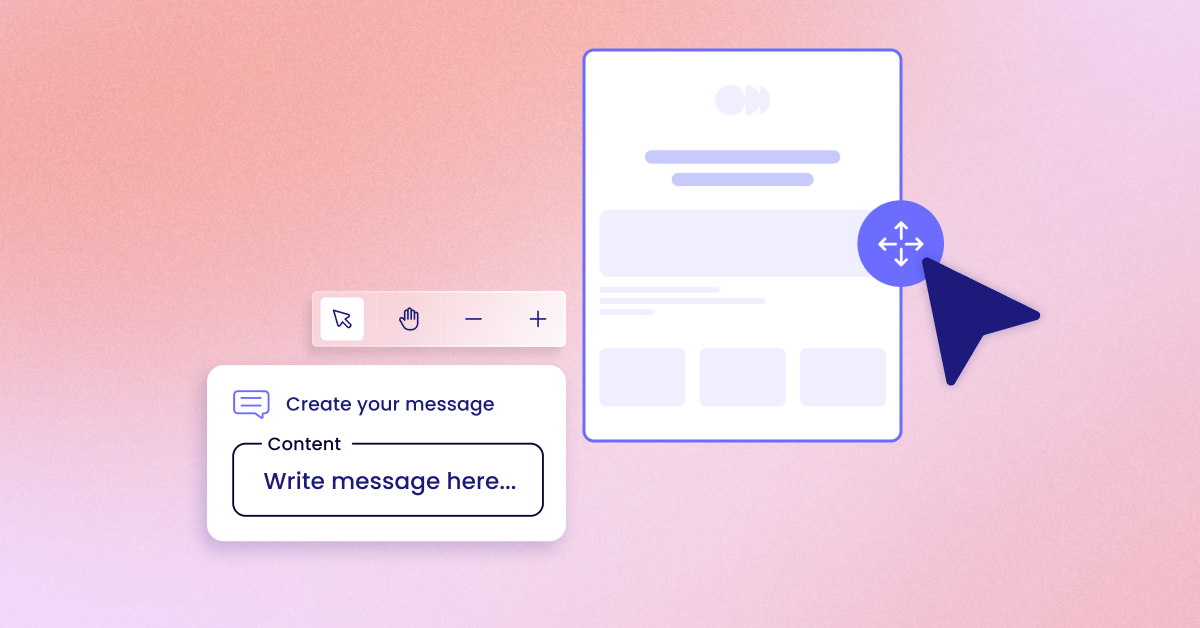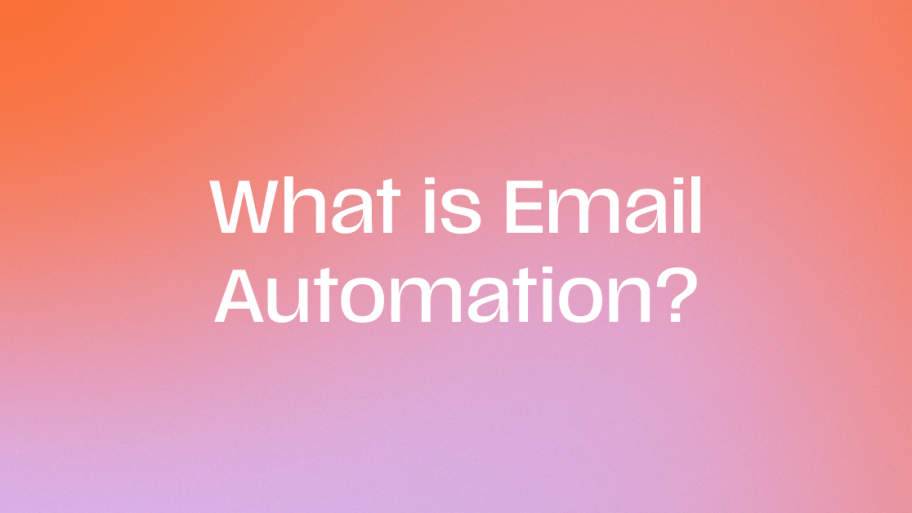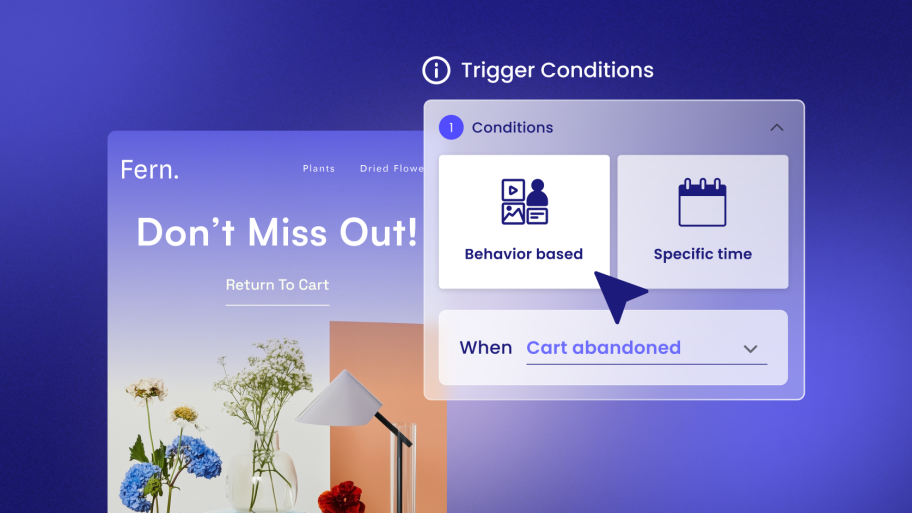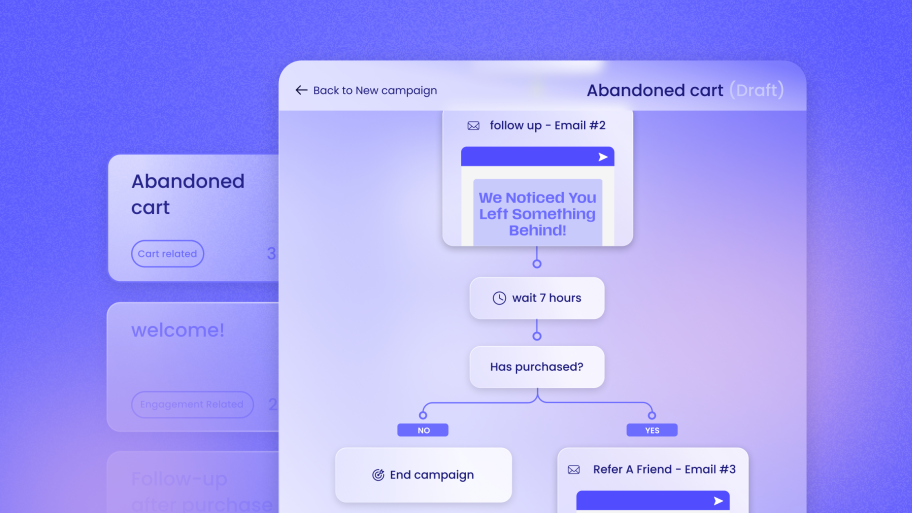For web creators and agencies, this isn’t just a client problem—it’s an opportunity. By implementing a powerful, automated abandoned cart email strategy, you can directly recover that lost revenue, prove your immense value, and transform your client relationships. This guide will show you how.
What is Cart Abandonment and Why Does It Happen?
Cart abandonment is simply when a potential customer adds items to their online shopping cart but leaves the website without completing the purchase. Before we can solve the problem, we need to understand why it happens in the first place.
The Psychology Behind Abandoned Carts
Shoppers leave for a variety of reasons, and most of them aren’t because they disliked the product. Understanding these motivations is the first step toward crafting an effective recovery strategy.
Common reasons include:
- Unexpected Costs: High shipping fees, taxes, or other charges that only appear at the final checkout step are a primary cause of abandonment.
- Forced Account Creation: Many shoppers don’t want the hassle of creating a new account and password just to make a single purchase.
- Complex Checkout Process: A long, confusing, or multi-page checkout can frustrate users and cause them to give up.
- Payment and Security Concerns: If a site doesn’t look secure or a customer’s preferred payment method isn’t available, they will hesitate to enter their credit card information.
- Simple Distraction: Life gets in the way. A phone call, a crying baby, or a sudden browser crash can easily interrupt the buying process.
- “Window Shopping”: Some users treat the cart as a wishlist or a way to save items for later consideration. They have an intent to buy, just not right now.
The Financial Impact on WooCommerce Stores
That 66.5% abandonment rate isn’t just a vanity metric; it translates directly to lost sales. For your clients, every abandoned cart is a missed opportunity for a sale, a new loyal customer, and future business.
As a web creator, you are perfectly positioned to address this critical business challenge. Solving the abandoned cart problem provides a clear, measurable return on investment (ROI) that you can present directly to your clients. When you can show them a dashboard that says, “We recovered $2,000 in lost sales for you last month,” you move from being a website builder to an indispensable growth partner.
The Power of the Abandoned Cart Email: Your Recovery Strategy
An abandoned cart email is an automated follow-up message sent to a shopper who added items to their cart but didn’t complete the purchase. It’s a simple concept, but its impact is profound.
Why This Strategy Is So Effective
Abandoned cart emails work so well because they target shoppers who have already shown high purchase intent. These aren’t cold leads; they are people who were moments away from buying.
Here’s why this strategy is a must-have for any WooCommerce store:
- Targets Warm Leads: These shoppers have already browsed, selected products, and started the checkout. They are significantly more qualified than a casual site visitor.
- Provides a Timely Nudge: Often, a simple and helpful reminder is all that’s needed to bring a distracted customer back to complete their purchase.
- Offers a Personalized Experience: The email is inherently personal because it features the exact products the shopper was interested in.
- Drives Revenue on Autopilot: Once you set up an abandoned cart automation, it works 24/7 to recover sales without any manual effort.
Key Elements of a High-Converting Abandoned Cart Email
A successful abandoned cart email is more than just a list of products. It needs to be crafted thoughtfully to be helpful, persuasive, and easy to act on.
Here are the essential components:
- A Compelling Subject Line: This is your first and only chance to get the email opened. Keep it clear, friendly, and intriguing.
- Examples: “Did you forget something?”, “Your items are waiting for you!”, “Complete your order from [Client’s Store Name]”
- Clear and Friendly Copy: Your tone should be helpful, not aggressive. Acknowledge that they left and make it easy for them to pick up where they left off.
- Visuals of the Abandoned Products: This is critical. Show, don’t just tell. Include large, clear images of the items they left in their cart, along with the product name, price, and any selected options (like size or color).
- A Prominent Call-to-Action (CTA): Use a bold, clickable button that makes the next step obvious.
- Examples: “Return to Your Cart,” “Complete My Purchase,” “View My Items”
- Social Proof: Build trust and reduce hesitation by including star ratings or a snippet from a positive customer review. After all, research shows that consumers are
186% more likely to buy something after reading reviews. - An Incentive (Use Strategically): A small discount or an offer for free shipping can be a powerful motivator, but you don’t always need to lead with it. Save it for a later email in your sequence.
- Support and Contact Information: Make it easy for customers to ask questions by providing links to your FAQ page or customer service email.
Building Your WooCommerce Abandoned Cart Email Sequence
While a single reminder email can be effective, a multi-email sequence, or “flow,” will recover significantly more revenue. A well-timed series of emails can address different customer hesitations without feeling pushy.
The Anatomy of a Winning 3-Email Flow
This structure is a proven starting point for any WooCommerce store. You can, and should, test and adjust it over time.
Email 1: The Gentle Reminder
- When to send: 1-3 hours after abandonment.
- Goal: Catch the shopper while the purchase is still fresh in their mind. This email is for those who were simply distracted or experienced a technical glitch.
- Content: Keep it simple and helpful. The tone should be, “Hey, looks like you left these great items behind. Here’s a link to get back to them.” Do not offer a discount here. The primary goal is to make it easy to return.
Email 2: The Value Nudge
- When to send: 24 hours after abandonment.
- Goal: Overcome common objections and build confidence in the purchase.
- Content: This is where you can re-emphasize the value of the products. Introduce social proof by showing star ratings or customer testimonials for the items in their cart. You could also create a subtle sense of urgency by mentioning that popular items sell out quickly.
Email 3: The Final Offer
- When to send: 3-5 days after abandonment.
- Goal: This is your last-ditch effort to win back the sale from shoppers who are more price-sensitive.
- Content: Now is the time to introduce a compelling, time-sensitive incentive. An offer like “Take 10% off your order—expires in 24 hours!” can create the urgency needed to finally drive the conversion.
This structured approach allows you to address different types of shopper hesitation at different stages, maximizing your chances of recovery.
Choosing the Right Tools for WooCommerce Abandoned Cart Emails
Now that you understand the strategy, how do you actually implement it? As a web creator, choosing the right tool is crucial—not just for your client’s success, but for your own workflow and profitability.
The Challenge with Disconnected Solutions
Many web creators try to piece together solutions by using external marketing platforms that aren’t built specifically for WordPress. This approach often leads to several pain points:
- Integration Friction: Managing external APIs, troubleshooting data syncing errors, and dealing with plugin conflicts can consume hours of your valuable time.
- Fragmented Experience: You and your client have to jump between the WordPress dashboard and another platform’s website to manage campaigns and view results. This is inefficient and confusing.
- Data Silos: Customer data lives in WooCommerce, but your marketing tool is somewhere else. This makes advanced segmentation and personalization difficult without complex workarounds.
The Advantage of a WordPress-Native Solution
A WordPress-native tool is built from the ground up to work seamlessly within the WordPress and WooCommerce ecosystem. This isn’t just a minor convenience; it’s a fundamental shift that makes your job easier and the results better.
Here’s why a native solution is superior:
- Seamless Integration: Everything—from the email builder to the analytics—is located directly within the WordPress dashboard you already know and use every day.
- Familiar Interface: The tool uses familiar WordPress UI patterns, drastically reducing the learning curve for you and your clients.
- Unified Data: WooCommerce customer and order data is instantly available. There are no APIs to connect or data to sync. When a cart is abandoned, your marketing tool knows immediately.
- Better Performance: A single, well-coded plugin that handles multiple communication tasks is often more efficient and less likely to slow down a site than an array of disconnected, conflicting plugins.
A Closer Look at Send by Elementor for Abandoned Carts
Send by Elementor is a prime example of a WordPress-native solution. It’s not just an email plugin; it’s a comprehensive communication toolkit designed specifically for web creators and their clients. It consolidates email marketing, SMS, and powerful automation features into a single, intuitive platform inside WordPress.
For abandoned cart recovery, Send by Elementor provides a powerful and streamlined experience:
- Pre-Built Automation Flows: It includes a ready-to-use Abandoned Cart automation template. This means you can launch a proven, multi-step recovery sequence in minutes, not hours, dramatically lowering the barrier to entry for you and your clients.
- Drag-and-Drop Email Builder: You can easily create beautiful, on-brand abandoned cart emails that perfectly match the client’s website design. The builder is intuitive, and you can leverage
ready-made templates to get started even faster. - Real-Time Analytics and ROI Tracking: This is a game-changer for web creators. The platform provides a clear, real-time dashboard that shows exactly how many carts were recovered and, most importantly,
how much revenue your automation has generated. This makes it incredibly easy to demonstrate your value and justify your services. - Advanced Audience Segmentation: As you grow, you can create more sophisticated flows. For instance, you could use Send by Elementor’s segmentation tools to send a different offer to first-time customers versus loyal VIPs, or create a unique flow for carts with a value over $200.
Other Tools in the Ecosystem
Of course, other solutions exist in the market. Some external platforms provide general email and SMS marketing with automation features. There are also smaller, single-purpose WordPress plugins that focus exclusively on cart recovery. While these tools can perform specific functions, they often lack the seamless, all-in-one experience of a truly WordPress-native communication toolkit, which simplifies your workflow and provides a single source for all client communication needs.
Step-by-Step: Setting Up Your First Abandoned Cart Flow with Send by Elementor
Let’s walk through just how easy it is to get a professional abandoned cart flow up and running for your client using Send by Elementor. This entire process happens within the WordPress dashboard.
Step 1: Install and Activate Send by Elementor Like any plugin, you’ll start by installing and activating Send by Elementor on your client’s WordPress site.
Step 2: Navigate to the Automation Flows In the WordPress admin menu, find the Send by Elementor section and click on “Automations.” This is your command center for all automated workflows.
Step 3: Select the Pre-Built Abandoned Cart Template Send by Elementor offers several pre-built templates for common marketing tasks. Click the “Abandoned Cart” template to instantly load a proven, multi-step workflow. This simple click saves you hours of planning and setup.
Step 4: Customize the Trigger and Timing The template will come with default settings, which you can easily adjust. The trigger will be “Cart is Abandoned.” You can define the delay—for example, triggering the flow 60 minutes after a shopper was last active on the site.
Step 5: Design Your Emails Click into each email step in the flow to open the
drag-and-drop email builder.
- Add the client’s logo and adjust the colors to match their brand.
- Write your compelling subject line and email copy.
- Use the special “Abandoned Cart” block to automatically pull in the product images, titles, and prices from the shopper’s specific cart. This personalization is handled for you.
- Customize the CTA button text and link.
Step 6: Build Out Your Sequence The template will likely include one or two emails. You can easily add more steps. For example, add a “Delay” step for 23 hours, followed by another “Send Email” step for your second reminder. This visual flow builder makes it easy to map out the entire customer journey.
Step 7: Activate and Monitor Your Flow Once you’re happy with your emails and timing, simply toggle the automation to “Active.” That’s it! The system will now run automatically. You can return to the Automations dashboard at any time to see
real-time analytics on how many people have entered the flow, opened your emails, and completed their purchase, along with the total revenue recovered.
Beyond the Basics: Advanced Tactics for Cart Recovery
Once your core email flow is running, you can implement more advanced strategies to recover even more sales.
Leveraging SMS for Immediate Impact
Did you know that
90% of text messages are read within three minutes? This makes SMS an incredibly powerful channel for time-sensitive reminders. A solution like Send by Elementor allows you to integrate SMS directly into your abandoned cart flow.
Consider a multi-channel flow:
- 1 Hour: Send Email #1 (Gentle Reminder).
- 24 Hours: If no purchase, send an SMS: “Hi [Name], still thinking about the items in your cart? They’re saved for you here: [Link]”.
- 48 Hours: If still no purchase, send Email #2 (Value Nudge with Social Proof).
This combination of email and SMS meets customers on different platforms and can significantly boost recovery rates.
The Power of A/B Testing
Don’t just set it and forget it forever. Use A/B testing to continuously optimize your flow. Test different elements to see what resonates best with your client’s audience:
- Subject Lines: “You left something behind” vs. “Your [Product Name] is waiting!”
- CTA Copy: “Complete Your Order” vs. “Return to My Cart”
- Incentives: 10% off vs. Free Shipping.
Even a small increase in your conversion rate can add up to thousands of dollars in recovered revenue over the course of a year.
Segmentation for Hyper-Personalization
Not all abandoned carts are created equal. Use segmentation to tailor your messaging for maximum impact.
- By Cart Value: For carts over $200, you could trigger a flow that offers a higher discount or emphasizes a “buy now, pay later” option.
- By Customer Status: Send a different message to a brand-new visitor than you would to a loyal, returning customer.
- By Product Category: If a customer abandons a complex or high-consideration product, you could send an email that links to a helpful guide or video tutorial about that product.
The Business Case for Web Creators
Implementing an abandoned cart strategy is about much more than just installing a plugin. It’s about fundamentally changing how you work with your clients and the value you provide.
From One-Off Projects to Recurring Revenue
Stop thinking of your work as just building websites. An abandoned cart recovery system is an ongoing marketing service. You can charge a one-time setup fee, followed by a monthly retainer for monitoring, A/B testing, and reporting. This creates a predictable, recurring revenue stream that helps you build a more sustainable and profitable business.
Demonstrating Clear ROI to Clients
The days of clients wondering what they’re paying for are over. With the
built-in analytics of a tool like Send by Elementor, you can provide a monthly report that shows them, in black and white, exactly how much money your efforts are making them. This powerful proof of value makes your monthly fee a no-brainer investment for them.
Strengthening Client Relationships
When you actively contribute to your client’s bottom line, you become more than just a vendor; you become a strategic partner. You are no longer the “website person”—you are the “growth person.” This deeper relationship leads to higher client retention, better projects, and more enthusiastic referrals.
Conclusion
Cart abandonment is one of the biggest challenges facing WooCommerce stores, but for savvy web creators, it’s one of the biggest opportunities. An automated email and SMS recovery flow is a proven, high-impact strategy to recapture lost sales and drive real business growth for your clients.
By using a powerful and intuitive WordPress-native toolkit, you can implement this strategy efficiently, manage it seamlessly within the dashboard you already love, and—most importantly—deliver measurable results that solidify your value. It’s time to go beyond just building websites and start building your clients’ businesses. Their success will become your own.




